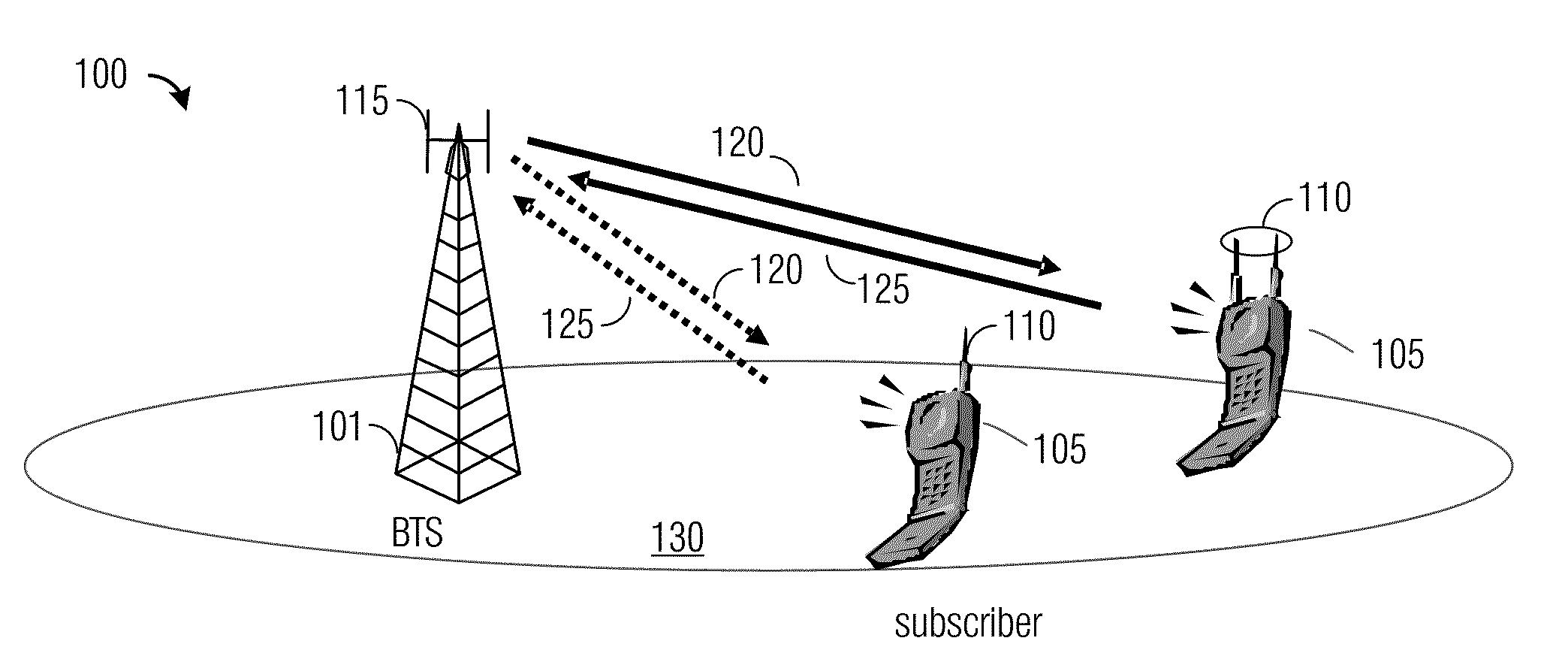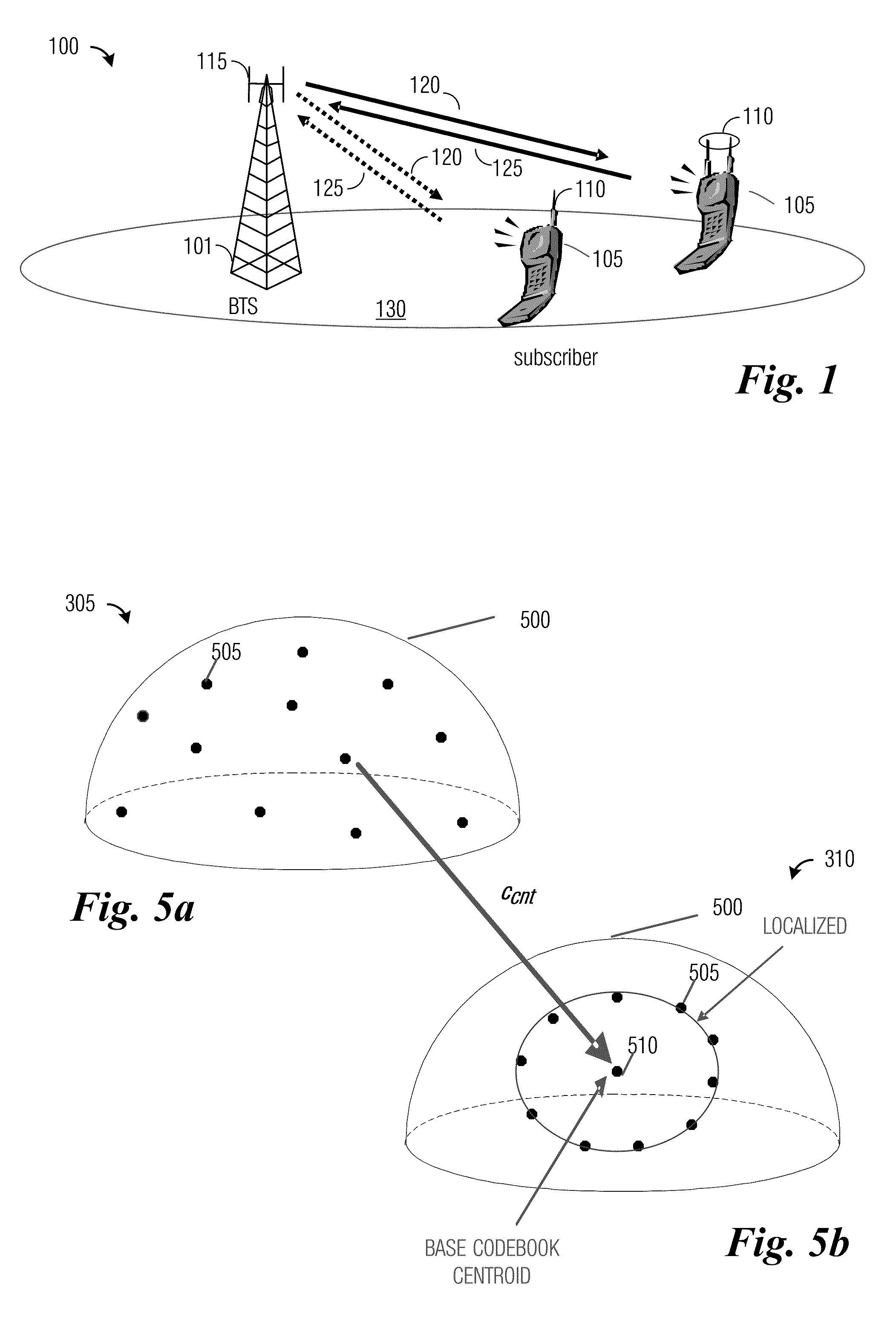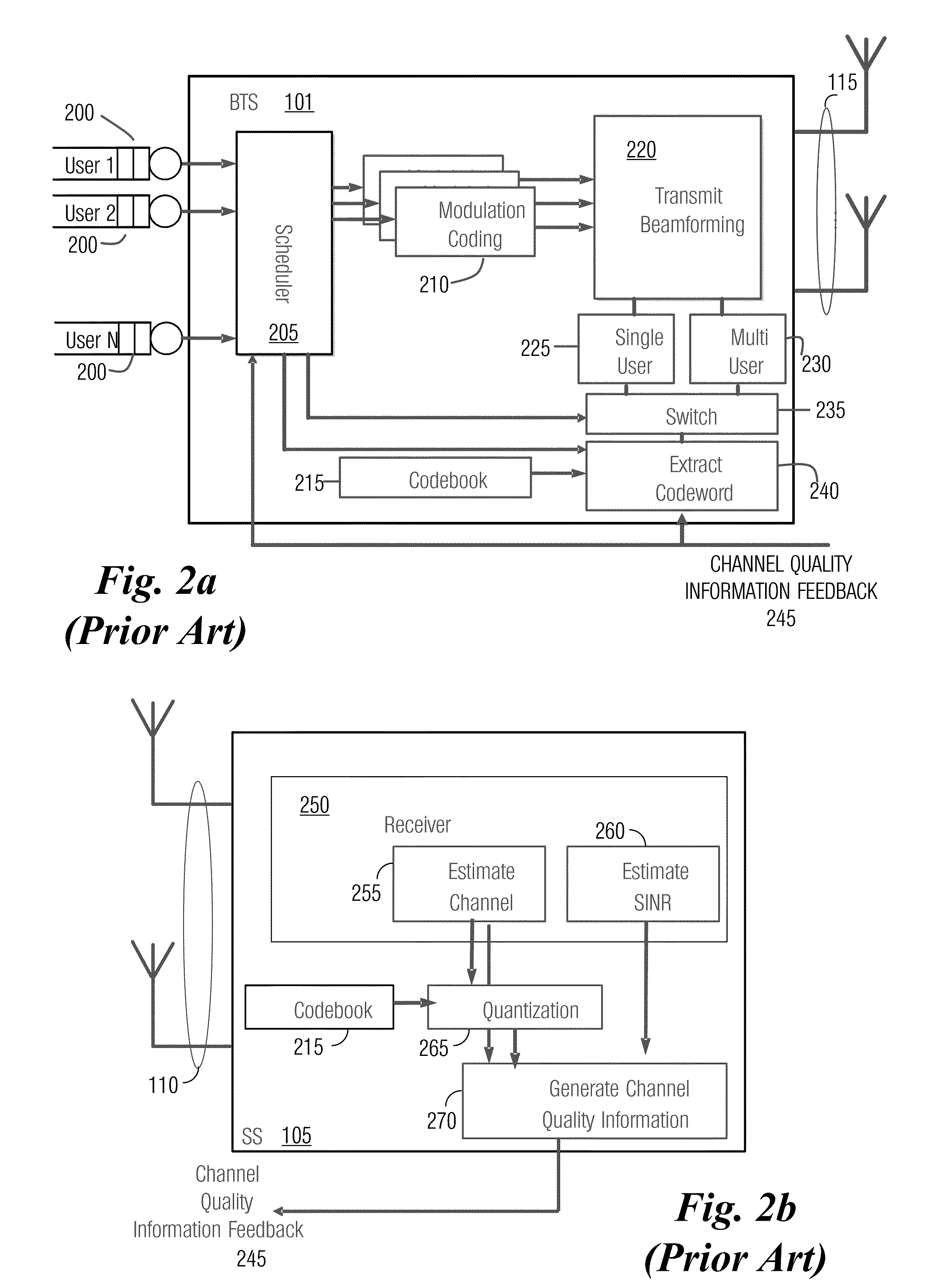System and Method for Wireless Communications
a wireless communication and codebook technology, applied in the field of wireless communication, can solve the problems of large feedback load, significant challenges to existing codebooks, and performance problems of both correlated, so as to reduce computational complexity, reduce the number of multiplication, and avoid transmit power imbalance
- Summary
- Abstract
- Description
- Claims
- Application Information
AI Technical Summary
Benefits of technology
Problems solved by technology
Method used
Image
Examples
Embodiment Construction
[0030]The making and using of the embodiments are discussed in detail below. It should be appreciated, however, that the present invention provides many applicable inventive concepts that can be embodied in a wide variety of specific contexts. The specific embodiments discussed are merely illustrative of specific ways to make and use the invention, and do not limit the scope of the invention.
[0031]The embodiments will be described in a specific context, namely a single user (SU) wireless communications system with two (2), four (4), and eight (8) transmit antennas, i.e., SU-MIMO. The invention may also be applied, however, to both SU-MIMO and multiple user (MU) MIMO wireless communications systems with an arbitrary number of transmit and receive antennas.
[0032]FIG. 1 illustrates a wireless communication system 100. Wireless communications system 100 includes a base transceiver station (BTS) 101 and a plurality of subscriber units 105, which may be mobile or fixed. BTS 101 and subscr...
PUM
| Property | Measurement | Unit |
|---|---|---|
| constant modulus property | aaaaa | aaaaa |
| transmission | aaaaa | aaaaa |
| Modulus | aaaaa | aaaaa |
Abstract
Description
Claims
Application Information
 Login to View More
Login to View More - R&D
- Intellectual Property
- Life Sciences
- Materials
- Tech Scout
- Unparalleled Data Quality
- Higher Quality Content
- 60% Fewer Hallucinations
Browse by: Latest US Patents, China's latest patents, Technical Efficacy Thesaurus, Application Domain, Technology Topic, Popular Technical Reports.
© 2025 PatSnap. All rights reserved.Legal|Privacy policy|Modern Slavery Act Transparency Statement|Sitemap|About US| Contact US: help@patsnap.com



